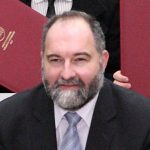
Electromagnetic field theory
Numerical methods in electronics
Electromagnetic compatibility, antennas and propagation, grounding systems
Human exposure to electromagnetic radiation
Biomedical applications of electromagnetic fields
Thermonuclear fusion
Stochastic electromagnetics
Laboratory for radio-propagation consists of 2 separate rooms (appx. 7 m x 5 m and 3 m x 5 m) located at 6th floor of FESB building. There are two computers, 6-GHz vector and spectral analyzer Anritsu, 2 100-MHz and 150-MHz oscilloscopes, 10-MHz function generator, low voltage DC-source, d2 Tesla’s coils and ground penetrating radar (GPR) prototype. There are several antenna types for different frequency range (0.1-18 GHz horn antenna, 0.5-3 GHz dual discone-type antena, 5-GHz disk antenna, itd.). Lab for numerical methods includes 6 PCs +workstation with graphical card for advanced computation. (Workstation for GPU card) Processor: Intel Core i7, RAM: 16GB DDR4 2400MHz, Primary disk: SSD SAM 500GB, Backup disk: 2TB, SATA6Gb, Graph. card: SAPPHIRE NITRO+ RX Vega 56, Power supply: 860W, 6 laptops HP 15da0011nm, Processor: Intel Core i3, RAM: 4GB DDR4, Primary disk: SSD 128GB, Backup disk: 1TB, SATA6Gb, Screen: 15.6″ Full HD LED).
Research activities will deal with a development of realistic deterministic and stochastic electromagnetic-thermal models of the human head for the human exposure to LF and HF fields, and biomedical applications pertaining to transcranial magnetic stimulation (TMS), transcranial electric stimulation (TES) and electric stimulation of nerves (PENS and TENS). Of particular interest will be the analysis of the human exposure to radiation of 5G systems. The brain model is based on the solution of Helmholtz equation using the boundary element method, finite element method and hybrid methods. Model of the nerve is based on the thin wire antenna theory and related Pocklington integral equation solved by means of the Galerkin-Bubnov scheme of the indirect boundary element method.
The validation of the results will be carried out by the comparison with other relevant methods of theoretical dosimetry.Stochastic modeling will be based on the use of stochastic collocation methods and stochastic finite elements. Radio-channels for wireless power transfer between helix antennas will be analyzed taking into account resonant coupling, with the application of stochastic methods in electromagnetics. Furthermore, mathematical model for the assessment of frequency and time response, respectively, of the antenna systems uused in GPR applications, based on the space-frequency integral equations of the Pocklington type and the space-time integral equation of the Hallen type, respectively, will be developed. Also, a formulation for the field transmitted into the lossy medium will be developed. Novel methods for the analysis of GPR systems including multilayer in freqency and time domain, respectively, will be developed.
Finally, sophisticated numerical methods (variants of finite lement method and boundary element method) for the solution of magnetohydrodynamics (MHD) equations (GradShafranov equation and current diffusion equation and other transport equations) used in fusion research to analyze tokamak equations will be delevoped. Special attention will be paid to the development of deterministic-stochastic models for the analysis of GPR and biomedical applications of electromagnetic fields. Within electromagnetic compatibility deterministic-stochastic models of lightning channel, grounding systems for wind turbines based on the antenna theory will be developed. Modeling of the environmental impact to antennas used in instrumental landing systems will be carried out.